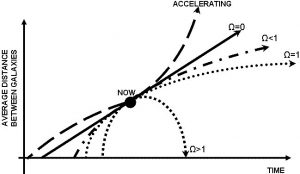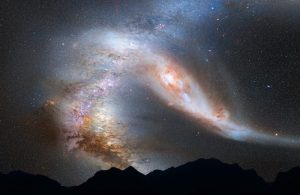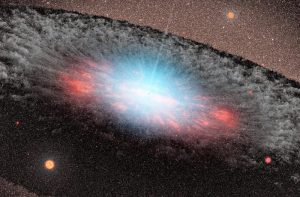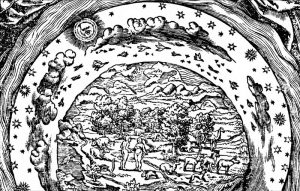Heliocentric theory
The heliocentric system, or heliocentric theory, is a cosmological model in which it is assumed that the Sun is at or near a central point, in other words, it is the center of the solar system or the universe while the Earth and other bodies revolve around it. In the 5th century B.C., the Greek philosophers Philolaus and Hicetas speculated separately that the Earth was a sphere that revolved daily around a mystical "central fire" that regulated the universe. Two centuries later, Aristarchus of Samos extended this idea by proposing that the Earth and other planets moved around a defined central object, which he believed to be the Sun.
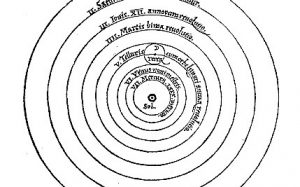
Related topics
Aristarchus of Samos, celestial spheres, geocentrism, heliocentrism, Nicolaus Copernicus, geocentric theory
What is heliocentric theory?
It is the theory that states that the earth and all other planets are revolving around the sun, which is a star in the solar system and was based on simple measurements of the distance between the earth and the sun.
About heliocentric theory
The heliocentric theory was formulated based on the movements of the planets and theories that already existed with respect to them, such as geocentric theory. It consists of a model of our universe in which the earth, the planets and the stars were revolving around the sun, which laid the foundations of modern astronomy.
It is a theory that provides a complete and detailed view of the way in which the universe works, and its model solved the problem of the Ptolemaic system and also provided a simple view of the universe by eliminating unnecessary mathematical calculations.
Who proposed it?
The theory was proposed by Nicolas Copernicus, who was one of the most important astronomers in history. He did it through the publication of the book called De revolutionibus orbium coelestium, in the year 1543 and where he sustained the astronomical model that affirmed that the sun was the center of the solar system.
Backgrounds
Copernicus’ model was based on several works by different astronomers of antiquity. The first antecedents to the theory date back to classical antiquity with Aristarchus of Samos, who had published a series of writings and quotations from some of his contemporaries, such as Archimedes.
One of the most important antecedents is a description made by Archimedes in which an alternative hypothesis of the heliocentric model was presented, which gave the notion of the existence of an observable movement in fixed stars.
Seleucus of Seleucia, was an astronomer who also defended the heliocentric system of Aristarchus, and some think that he was able to demonstrate the heliocentric theory by determining the constants of the geocentric model and applying them to the heliocentric theories, besides several calculations with respect to the planetary positions.
Nicole Oresme also discussed the possibility of the earth rotating on its own axis and other astronomers and cosmologists thought of the possibility of a heliocentric universe at the end of the Middle Ages.
History
Aristarchus of Samos was the first to propose the heliocentric theory and he was based on the distance between the Earth and the Sun, he explained that the Sun was bigger than the Earth and for this reason, he proposed that it was the Earth that revolved around the Sun and not the other way around.
In the 16th century, Nicholas Copernicus formulated the theory again, this time based on precise mathematical calculations, which made the difference with Aristarchus’ theory, publishing in 1543 the book De Revolutionibus Orbium Coelestium.
Heliocentrism had already been described many years ago by Aristarchus of Samos, who had based himself on simple measurements of the distance from the Earth to the Sun, which explained that the sun was larger than our planet. For this reason, Aristarchus proposed that it was the Earth that revolved around the Sun and not the other way around, being the first proponent of the heliocentric model.
Characteristics
The most important characteristics of heliocentric theory were:
- The stars move in a circular way, are eternal, uniform and are composed of several cycles.
- The center of the universe is located near the Sun.
- Around the Sun the different planets are orbiting.
- Stars are distant and fixed objects, which are not orbiting around the Sun.
- The earth has three movements: a daily rotation, an annual revolution and an annual inclination of its axis.
- The retrograde motion of the planets is based on the movements of the Earth itself.
- The distance between the Sun and the Earth is very small compared to that of the Earth to the stars.
What problems does the heliocentric theory present?
The heliocentric theory was strongly opposed by Catholic, Protestant and Jewish religious authorities and by the scientific world. In fact, the work was forbidden by the Church and its defenders were persecuted, imprisoned and some of them were burned at the stake.
It was considered too simple a theory and for many scientists, they had no major advantage over the old theory, nor did they have any observations that could not be explained by both theories. For this reason, more than a century was needed for the definitive acceptance of heliocentrism.
Importance of heliocentric theory
The importance of this theory is partly the break with the prevailing religious model that existed at the time, which was a warning about the profound and important changes that would come with the Scientific Revolution and the development of humanism as the prevailing ideology. Heliocentric theory is the basis and foundation of all modern astronomy.
How to cite this article?
Briceño V., Gabriela. (2019). Heliocentric theory. Recovered on 3 January, 2025, de Euston96: https://www.euston96.com/en/heliocentric-theory/



